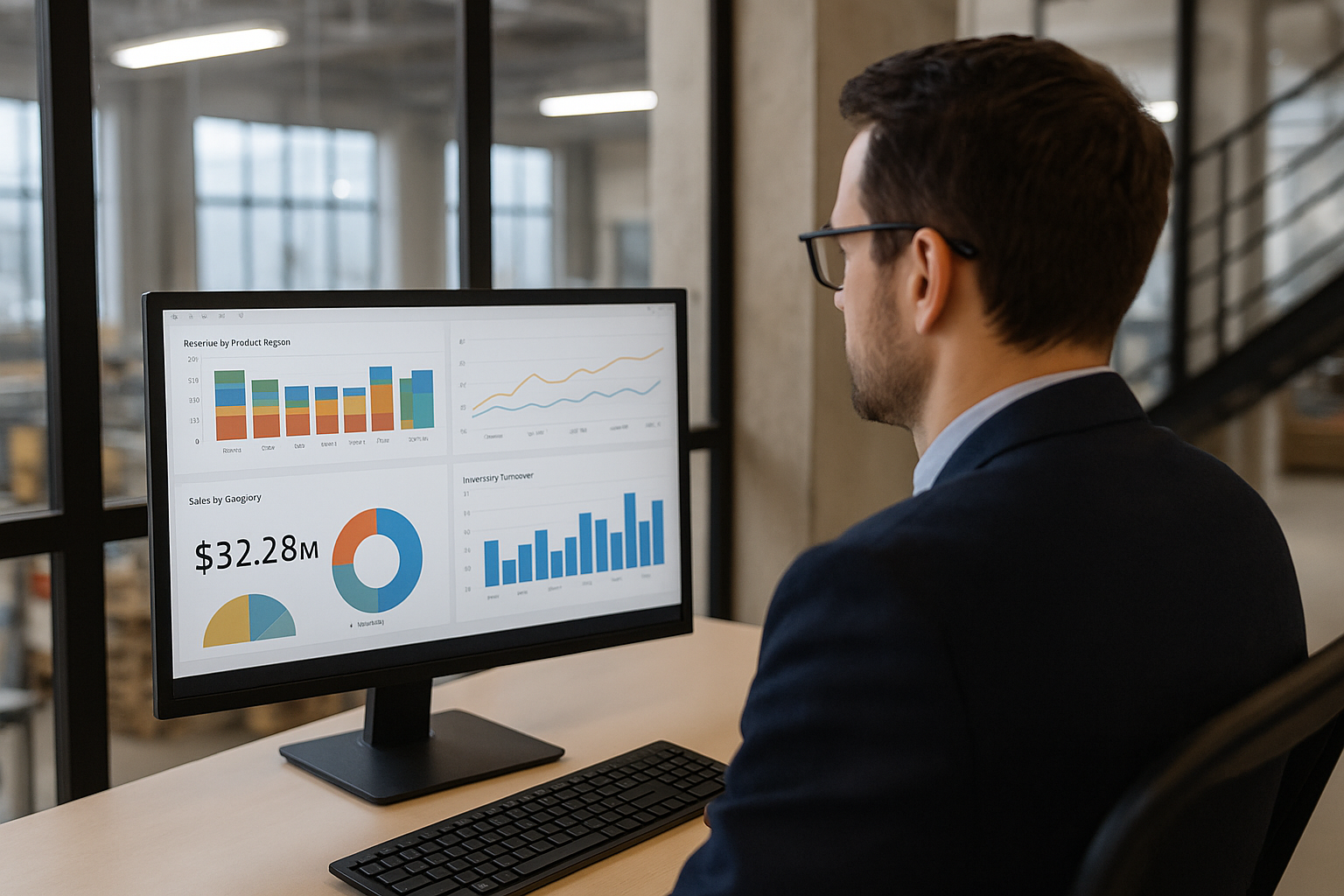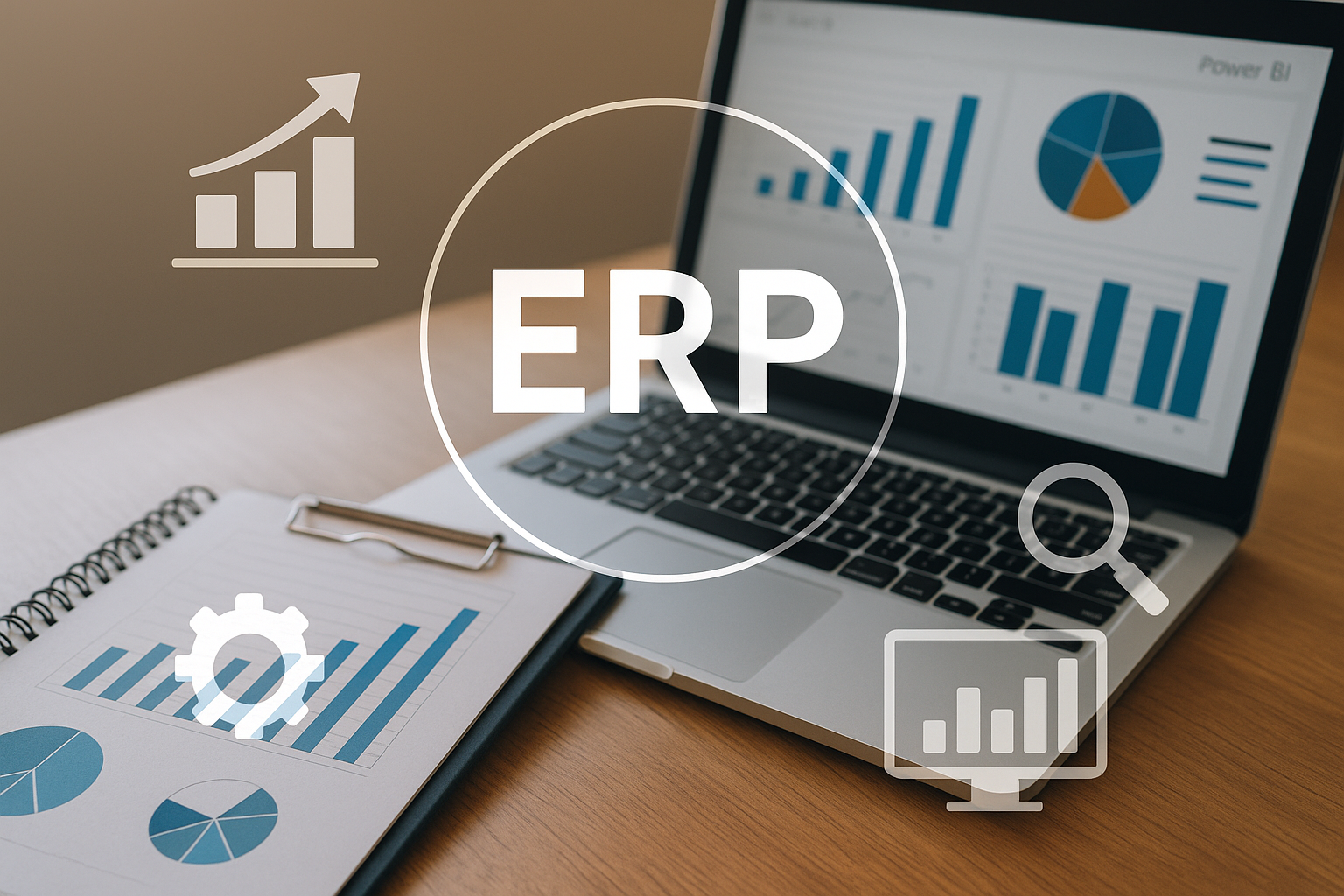From Transactions to Intelligence:
Why ERP Data Is Your Business’s Most Valuable Asset
By Richard Joseph June 6, 2025
Most companies see ERP as a workflow tool. But those that succeed long term know it’s much more than that. Your ERP is a data engine—fueling insight, alignment, and even revenue. Let's explore how ERP systems, when integrated and governed properly, become the foundation for enterprise intelligence. We use Microsoft Dynamics 365 Business Central (D365 BC) and Power BI as practical examples, while staying technology-agnostic in principle.
ERP Is the Core, But Not the Whole Brain ERP platforms are the operational backbone of most organizations, consolidating finance, inventory, procurement, and order data. But unless your data is clean, validated, and accessible, your ERP becomes little more than a digital filing cabinet.
According to Staedean, poor data quality in ERP systems can cost organizations an average of $15 million annually. The true value of an ERP lies in how its data is used—not just stored.
Integration Brings the Bigger Picture No ERP exists in a vacuum. eCommerce, CRM, HRIS, B2B portals, vendor systems—these all hold vital data about your customers, products, people, and partners. When these sources are connected to your ERP, you shift from isolated transactions to integrated insights.
McKinsey reports that data-driven organizations are 23x more likely to acquire customers and 6x more likely to retain them. If you’re only analyzing ERP data without integrating these other sources, you’re missing crucial context.
Centralization Enables Clarity Consolidating data into a central platform—such as Microsoft Azure Data Lake or Fabric—allows for comprehensive analysis. Once validated and transformed, the data becomes a trusted source for business intelligence.
Keboola and Forbes report that 69% of companies using big data make better strategic decisions, and 54% improve operational control. With this clarity, departments can stop arguing over numbers and start acting on them.
Data Visibility for Every Role Data isn't just for leadership. Sales, operations, finance, HR—every team needs visibility into KPIs that matter to them. Tools like Power BI allow for role-based dashboards that pull from ERP and connected systems in real-time.
Harvard Business Review notes that 60% of employees say they frequently cannot find the data they need to make decisions. By building trusted, accessible dashboards, businesses can ensure every role is empowered with insight.
Trust, Governance, and Secure Access The power of data is lost without trust. Standardizing definitions, validating metrics, and applying role-level security ensures that each person sees the data they need—and only that data. Power BI supports row-level security and compliance-aligned data practices. Microsoft’s Common Data Model helps further standardize across applications.
Monetizing Data: Turning Insight into Revenue Once data is reliable and organized, companies can start to ask a new question: "What is this data worth to others?"
Consider anonymized customer trend data shared with suppliers. Or benchmarking dashboards sold to industry partners. Companies like Eskimi have built subsidiaries, such as Redmob, around monetizing audience insights. Uber has expanded into freight and food services largely by leveraging its data model.
Monetization doesn’t always mean direct sales. Insight can power new offerings, improve margins, or influence pricing strategies that drive top-line growth.
Getting Started: A Roadmap for SMBs
Audit your data across ERP and connected systems
Evaluate your existing data sources, including ERP, CRM, eCommerce, HR, and operations platforms.
Identify overlaps, inconsistencies, and gaps in critical business metrics.
Clean and validate core datasets
Use data cleansing tools or manual governance practices to ensure accuracy.
Define master data standards (e.g., customers, products, vendors) and apply them consistently.
Establish a centralized platform
Create a modern data architecture using tools like Azure Data Lake or Microsoft Fabric.
Align data pipelines using ETL/ELT practices, ensuring real-time or scheduled data ingestion.
Build meaningful dashboards
Start with essential KPIs for leadership, then expand to team-specific views.
Use tools like Power BI with role-based security to create trusted visibility.
Develop a data strategy and explore external value
Formalize how your business will govern, use, and possibly monetize data.
Consider new products, benchmarking services, or supplier-facing analytics as revenue streams.
Taking these steps transforms your ERP and surrounding ecosystem from a passive system of record into an active engine for strategy and growth.
As one expert put it: "Your data isn’t just valuable—it is value."
You already have the data. The question is: can you trust it? Can you act on it? Can you monetize it?
An ERP without strategy around data is a liability. But with proper integration, governance, and visibility, it becomes the brain of your business—and perhaps your most valuable product.
Referenced Sources and Data Points
Poor Data Quality Costs (Staedean)
Claim: Poor data quality in ERP systems can cost organizations an average of $15 million annually.
McKinsey – Data-Driven Business Advantage
Claim: Data-driven organizations are 23x more likely to acquire customers and 6x more likely to retain them.
Source: McKinsey Global Institute
Keboola/Forbes – Big Data ROI
Claim: 69% of companies using big data make better strategic decisions; 54% improve operational control.
Sources:
Eskimi / Redmob – Data Monetization
Example: Eskimi launched Redmob to sell anonymized audience data to advertisers.
Uber – Data-Driven Expansion into Freight and Food
Example: Uber used its data infrastructure to launch Uber Freight and Uber Eats.
About the Author Richard Joseph is the Managing Director of Tech Lens Advisors and a strategic technology advisor with over 30 years of experience in enterprise systems, digital transformation, and organizational change. He has led ERP and analytics initiatives across industries including retail, logistics, public sector, and professional services. Richard specializes in helping organizations align technology investment with business value, ensuring data-driven decisions are both practical and profitable. Connect with him at techlensadvisors.com.

